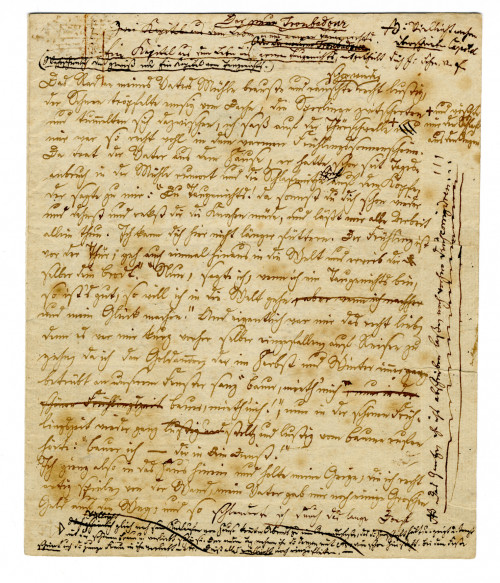The novella Memoirs of a Good-for-Nothing is one of Joseph von Eichendorff’s most well-known works. A young man leaves his father’s mill — and with it the safety of a pre-ordained future — to try out new possibilities and lifestyles in the wide world. In the father’s eyes, he is a good-for-nothing. However, the reader sees the world solely through the eyes of the son. We accompany the starry-eyed dreamer who, with a small fiddle in hand and great faith in God in his heart, surrenders himself to the forces of destiny. He enjoys his freedom and the beauties of nature, never knowing what he will encounter next. A film in this installation conveys the mood of the hero’s travels. And he does in fact try out different ways of life, for example when he accepts a position as a customs collector. Equipped with his predecessor’s pipe and night cap, he now outwardly embodies the philistine — the antithesis to the Romantic. An unsated sense of longing, however, will soon save him from the conventional life. His further adventures take him as far as Rome, and then back to the little castle near Vienna where he has already stopped before. A secret surrounds his “lovely lady”, but eventually the story comes to an end with the words: “… and everything was delightful!”
The text reads as if Eichendorff had dashed it off in a single sitting. In fact, he spent several years of disciplined work on it. The manuscript on view in the display case, dating from 1822, is full of changes and corrections. Initially, the title was to be “The New Troubadour” with reference to the courtly love poetry of the Middle Ages. It was not until 1826 that the complete work was finally published under the title we know it by today.
Eichendorff’s novella is a typical Romantic work — in terms of content, but also with regard to form. It integrates numerous songs, most of them written by the author himself. He borrowed the popular bridal song We Wind Round Thee the Bridal Wreath from the Romantic opera Der Freischütz, which celebrated its world premiere in 1821 with music by Carl Maria von Weber and a libretto by Friedrich Kind. The song is found in the final chapter, in which the hero, to his pleasant surprise, finds himself at his own wedding.
It is no coincidence that Eichendorff’s novella is typically assigned to school pupils. After all, graduation from school represents a decisive threshold in the lives of young people. Between their romantic dreams and real circumstances, they must now find their way to personal happiness.
Objects
-

JOSEPH VON EICHENDORFF
Der neue Troubadour. Ein Kapitel aus dem Leben eines armen Taugenichts, mitgetheilt durch J. Frhrn. v. E. (1822)
1823
-
Poster for Freischütz
Theatre poster, 1823.
-

FRIEDRICH WILHELM IV. VON PREUSSEN
Patent für den Regierungs-Rath Freiherrn von Eichendorff als Geheimer Regierungs-Rath (12. Januar 1841)
-
JOSEPH VON EICHENDORFF
Aus dem Leben eines Taugenichts. Novelle. Nachwort von Konrad Nussbächer
Stuttgart: Reclam 1970.